1. Chung BS, Koh KS, Oh CS, Park JS, Lee JH, Chung MS. Effects of reading a free electronic book on regional anatomy with schematics and mnemonics on student learning. J Korean Med Sci. 2020; 35(6):e42. PMID:
32056402.

2. Park JS, Chung MS, Shin DS, Har DH, Cho ZH, Kim YB, et al. Sectioned images of the cadaver head including the brain and correspondences with ultrahigh field 7.0 T MRIs. Proc IEEE. 2009; 97(12):1988–1996.
3. Shin DS, Jang HG, Park JS, Park HS, Lee S, Chung MS. Accessible and informative sectioned images and surface models of a cadaver head. J Craniofac Surg. 2012; 23(4):1176–1180. PMID:
22801119.

4. Chung BS, Chung MS. Homepage to distribute the anatomy learning contents including Visible Korean products, comics, and books. Anat Cell Biol. 2018; 51(1):7–13. PMID:
29644104.

5. Pflesser B, Petersik A, Pommert A, Riemer M, Schubert R, Tiede U, et al. Exploring the visible human's inner organs with the VOXEL-MAN 3D navigator. Stud Health Technol Inform. 2001; 81:379–385. PMID:
11317772.
6. Nowinski WL, Chua BC, Johnson A, Qian G, Poh LE, Yi SH, et al. Three-dimensional interactive and stereotactic atlas of head muscles and glands correlated with cranial nerves and surface and sectional neuroanatomy. J Neurosci Methods. 2013; 215(1):12–18. PMID:
23416136.

7. Iacono MI, Neufeld E, Akinnagbe E, Bower K, Wolf J, Vogiatzis Oikonomidis I, et al. MIDA: a multimodal imaging-based detailed anatomical model of the human head and neck. PLoS One. 2015; 10(4):e0124126. PMID:
25901747.

8. Park HS, Chung MS, Shin DS, Jung YW, Park JS. Whole courses of the oculomotor, trochlear, and abducens nerves, identified in sectioned images and surface models. Anat Rec (Hoboken). 2015; 298(2):436–443. PMID:
25212480.

9. Chung BS, Chung MS, Park JS. Six walls of the cavernous sinus identified by sectioned images and three-dimensional models: anatomic report. World Neurosurg. 2015; 84(2):337–344. PMID:
25839400.

10. Chung BS, Ahn YH, Park JS. Ten triangles around cavernous sinus for surgical approach, described by schematic diagram and three dimensional models with the sectioned images. J Korean Med Sci. 2016; 31(9):1455–1463. PMID:
27510391.

11. Noorafshan A, Hoseini L, Amini M, Dehghani MR, Kojuri J, Bazrafkan L. Simultaneous anatomical sketching as learning by doing method of teaching human anatomy. J Educ Health Promot. 2014; 3:50. PMID:
25013843.
12. Backhouse M, Fitzpatrick M, Hutchinson J, Thandi CS, Keenan ID. Improvements in anatomy knowledge when utilizing a novel cyclical “Observe-Reflect-Draw-Edit-Repeat” learning process. Anat Sci Educ. 2017; 10(1):7–22. PMID:
27164484.

13. Park JS, Chung MS. Recording, editing, and distributing the movies of anatomy lectures. Korean J Anat. 2006; 39(1):17–25.
14. Benly P. Teaching methodologies on anatomy-a review. J Pharm Sci Res. 2014; 6(6):242–243.
15. Jabeen N, Ghani A. Comparison of the traditional chalk and board lecture system versus power point presentation as a teaching technique for teaching gross anatomy to the first professional medical students. J Evol Med Dent Sci. 2015; 4(11):1811–1817.

16. Shin DS, Chung MS, Park JS, Park HS, Lee S, Moon YL, et al. Portable document format file showing the surface models of cadaver whole body. J Korean Med Sci. 2012; 27(8):849–856. PMID:
22876049.

17. Park HS, Choi DH, Park JS. Improved sectioned images and surface models of the whole female body. Int J Morphol. 2015; 33(4):1323–1332.

18. Shin DS, Jang HG, Hwang SB, Har DH, Moon YL, Chung MS. Two-dimensional sectioned images and three-dimensional surface models for learning the anatomy of the female pelvis. Anat Sci Educ. 2013; 6(5):316–323. PMID:
23463707.

19. Chung BS, Chung MS. Four learning tools of the Visible Korean contributing to virtual anatomy. Surg Radiol Anat. 2019; 41(10):1211–1216. PMID:
31254041.

20. Kwon K, Chung MS, Shin BS, Chung BS. Peeled volume models of a whole body to enhance comprehension of anthropological bone landmarks. Folia Morphol (Warsz). 2019; 78(4):833–838. PMID:
30835339.

21. Kamphuis C, Barsom E, Schijven M, Christoph N. Augmented reality in medical education? Perspect Med Educ. 2014; 3(4):300–311. PMID:
24464832.

22. McMenamin PG, Quayle MR, McHenry CR, Adams JW. The production of anatomical teaching resources using three-dimensional (3D) printing technology. Anat Sci Educ. 2014; 7(6):479–486. PMID:
24976019.

23. Lee SB, Chung BS, Chung MS, Youn C, Park JS. Browsing software of the head sectioned images for the Android mobile device. Int J Morphol. 2017; 35(4):1377–1382.

24. Chung BS, Shin DS, Brown P, Choi J, Chung MS. Virtual dissection table including the Visible Korean images, complemented by free software of the same data. Int J Morphol. 2015; 33(2):440–445.

25. Baratz G, Wilson-Delfosse AL, Singelyn BM, Allan KC, Rieth GE, Ratnaparkhi R, et al. Evaluating the anatomage table compared to cadaveric dissection as a learning modality for gross anatomy. Med Sci Educ. 2019; 29(2):499–506.

26. Benninger B. Google Glass, ultrasound and palpation: the anatomy teacher of the future? Clin Anat. 2015; 28(2):152–155. PMID:
25377631.

27. Hackett M, Proctor M. Three-dimensional display technologies for anatomical education: a literature review. J Sci Educ Technol. 2016; 25(4):641–654.

28. Jabeen N, Ghani A. Comparison of the traditional chalk and board lecture system versus power point presentation as a teaching technique for teaching gross anatomy to the first professional medical students. J Evol Med Dent Sci. 2015; 4(11):1811–1817.

29. Greene SJ. The use and effectiveness of interactive progressive drawing in anatomy education. Anat Sci Educ. 2018; 11(5):445–460. PMID:
29624896.

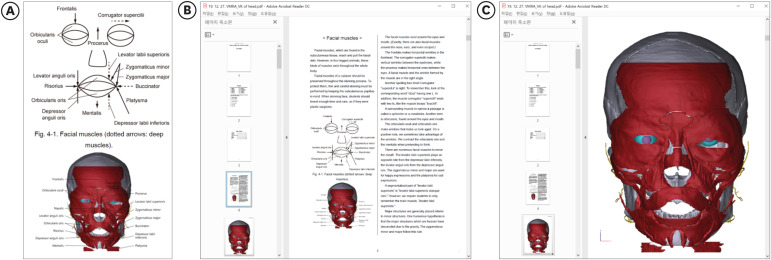
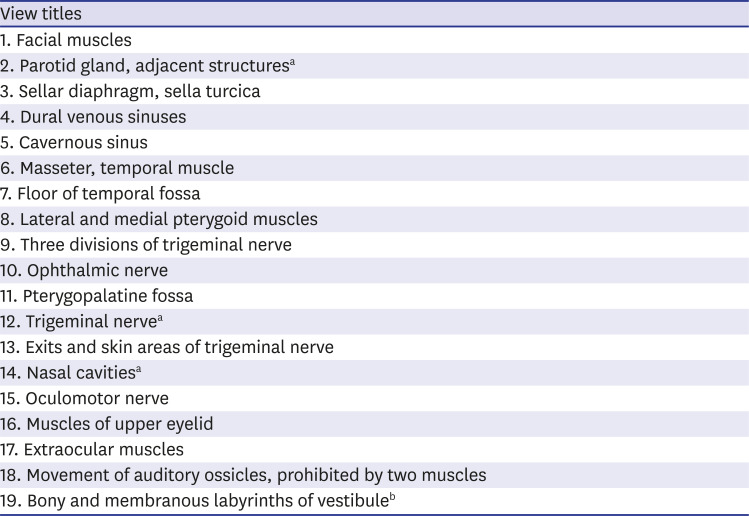




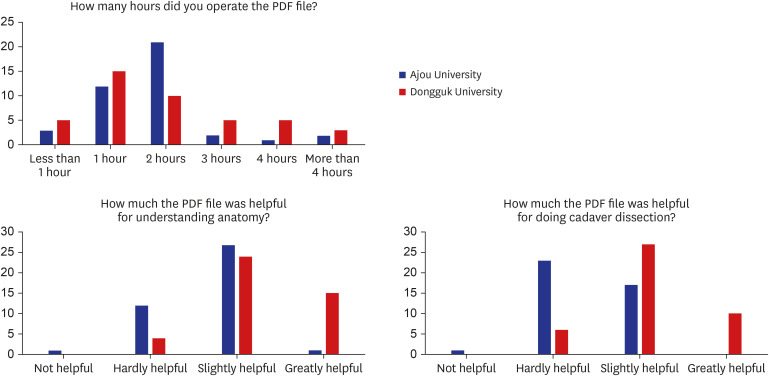
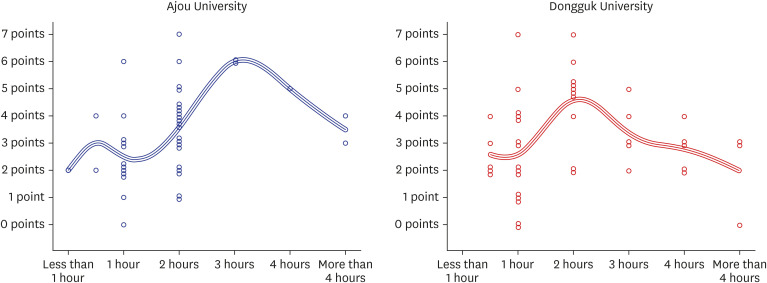




 PDF
PDF Citation
Citation Print
Print



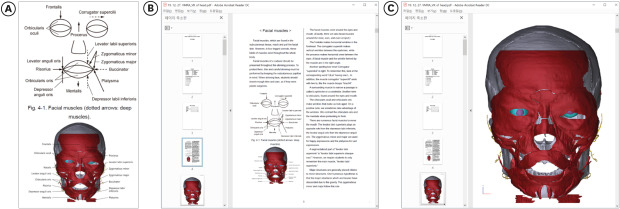
 XML Download
XML Download